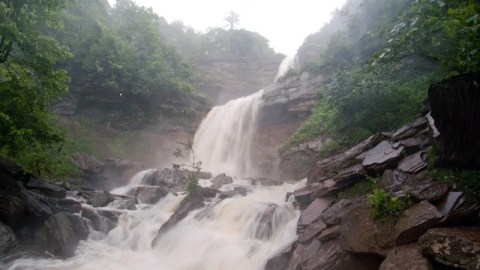Hitting the Trail: On the Heels of the Hudson River School

Experts commonly accept the Hudson River School, led by Thomas Cole, as the first true American art school and movement. They looked at the American landscape and saw something the natural settings of England and Europe did not offer. That natural newness fit in beautifully with the uniqueness of the American democratic experiment. Thanks to the Thomas Cole National Historic Site, we can now walk in the footsteps and see what the Hudson River School painters once saw, or at least as close an approximation as modernity allows. The Hudson River School Art Trail takes us back in time to when the land was pristine and the American democratic dream still seemed attainable.
The Art Trail first took shape in June 2005, when the Thomas Cole National Historic Site first announced the project. Five years later, the Art Trail now bridges the centuries by establishing a web presence to draw in today’s generation into the world of yesterday. Phase two also includes establishing outdoor trail markers and signs to act as “captions on the landscape,” educating hikers with reproductions of Hudson River School paintings done at the site accompanied by background information on the painting, the artist, and relevant historical facts and anecdotes about the site. Just as wall plaques guide us through museum galleries, these outdoor plaques will guide us through the gallery of nature itself.
A full-color brochure of the trail is available here. Eight sites currently make up the trail, but more will be added as the project continues. Right now, the sites are Cedar Grove, aka, The Thomas Cole National Historic Site; The Olana State Historic Site, the 250-acre estate of Frederic Edwin Church, a former student of Cole and perhaps the second-most important figure in the Hudson River School; Catskill Creek; Kaaterskill Clove; Kaaterskill Falls (shown above); North-South Lake; Sunset Rock (aka, Bear’s Den); and Catskill Mountain House. To stand at Kaaterskill Clove, for example, in the spot where Asher Brown Durand painted Kindred Spirits in 1849 as a tribute to both Cole and poet William Cullen Bryant, you can’t help but feel a kinship to the people who first internalized the spirit of the place and preserved it through art so that we can rediscover it today. The various landmarks offer a wide degree of challenge, ranging from simply stepping out of your car to actually exerting yourself physically on a hike. Each, however, seems well worth the effort.
I’ve always found it interesting that the way that American art connects with the American landscape frequently lacks the nationalism that European landscape art often did. British landscapes, for example, cry out colonialism to me—a mastering of the plain rather than an appreciation of it. Of course, Americans have more than mastered our natural resources, to our regret, but the art documenting and paralleling our development as a nation in many ways cautioned us not to, calling us to coexist with the land instead. In Winslow Homer and the Poetics of Place at the Portland Museum of Art (which I reviewed here), Homer’s art appears as a bridge between the nineteenth and twentieth centuries and an agricultural and modern industrial America. Homer’s builds that bridge on a close examination of the landscape and our relationship with it, good and bad. The Hudson River School Art Trail acts as not only a call to ecological renewal, but also to a renewed relationship with who we once were as a nation—a bright and shiny new democracy eager to live up to an ideal. Hitting the Hudson River School Art Trail may inspire some to clean up our act—both in our environment and in our collective national soul.





